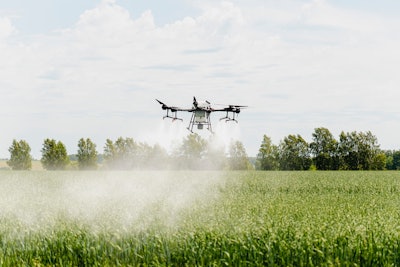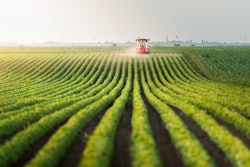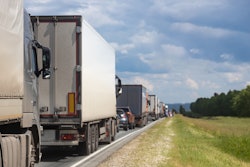
Climate change is taking a toll on the U.S. food supply. It’s not just extreme heat impacting crops this year. While farmers in the Midwest are dealing with extreme temperatures and drought, farmers in the Northeast have lost a significant portion of their harvests to flooding. In recent times, abnormal frosts, tornados, hurricanes, and wildfires have also wreaked havoc on farms in parts of the country. According to the USDA, despite the extreme weather that Mother Nature has been dishing up, overall crop yields have been above average, and the supply chain has remained strong.
In 2021, U.S. farms produced crops at 894 pounds per acre—a 21% increase from the year before and a record high. Production dipped below this record in 2022, but yields were still above average. While the last few years have experienced strong harvests, farmers have lost seven years of productivity growth over the last 60 years due to climate change, according to a 2021 Cornell study.
Technology has played a major contributing factor in keeping the food supply healthy despite climate change. Over the years, the agricultural industry has developed seeds designed to overcome certain weather conditions and pests, more effective fertilizers, fungicides, pesticides and planting methods, and more efficient machinery for planting and harvesting. Today, farmers are turning to new technologies like drones and artificial intelligence.
Drones play a critical role in precision agriculture, enabling farmers to survey acres of crops without ever setting foot, or tire, in a field. Using drones instead of tractors can help farmers reduce fuel costs, use less water, and spot treat fields instead of coating them with treatments thereby reducing fertilizer needs and cost, over-spraying, and chemical runoff, among other environmental benefits. Drones can also still be operated when fields are flooded or when crops prohibit the use of heavy machinery while tractors and ground rigs sit idle. While checking each plant for pests and health may be impossible in a tractor, the process is simple for a drone. Flying over fields, farmers can check for pests and diseases in fruit, nut and row crops and apply a targeted treatment as needed instead of spraying an entire field just in case. Allocating limited water supplies to the plants that need it most is also made easier by drones.
Most farmers today, even despite carrying on the family business, may operate their farms using the same methods and the same technology as previous generations, while others may take on a more scientific approach utilizing precision agriculture methods and drones to grow more sustainably with improved outcomes. In fact, there are benefits of spray drones compared to hiring an airplane or a helicopter to spray.
In addition to applying fungicide and nutrients to just under 3,000 acres of crops, drones can even seed for cover crops. Compared to hiring an airplane for spraying, drones have several advantages, including customizable application maps and precise deployment of product vs. giving product to an airplane and hoping that it is applied to the right field in the right manner.
Farming is becoming as precise as anybody wants it to be. Instead of making an educated guess at what to treat crops with and when, today’s farmers are able to micromanage their crops taking tissue samples of the corn, sending them to a lab to determine what micronutrients are low and then applying products based on the testing results. This can all happen in the span of a week vs. waiting two weeks to schedule an airplane or a few days for the co-op to have a ground rig available to spray.
Every farm is different, and it is impossible to predict when and where the next climate change disaster will strike. However, the impact that drones are having on the agriculture industry is undeniable. Ensuring that U.S. farmers can continue to produce crops to fuel the food supply chain is critical to protecting the health and financial prosperity of the country. As the climate evolves, farmers will need to rely on technology more and more to adapt their growing methods and maintain their harvests. From water management to overcoming worker shortages and controlling costs, drones can help farmers and the supply chain continue to thrive despite the many food security challenges faced today.


















